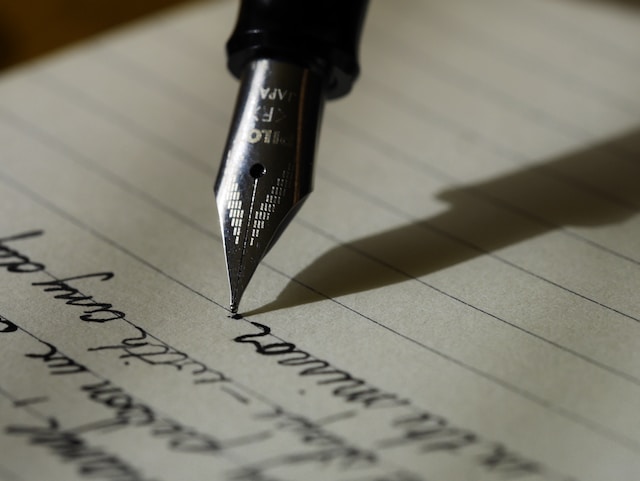[acf field=”quick_answer” class=”custom-box” id=”tech-shift-quick-answer”]
In the age of advanced technology, plagiarism and academic dishonesty have taken on a new form. Instead of traditional copying and pasting, we now face a more sophisticated threat: AI-generated content. In response to this evolving challenge, various tools and technologies have been developed to detect AI plagiarism, ensuring the integrity and originality of written content. These developments have revolutionized the way we approach and understand plagiarism in the digital era.
[acf field=”key_takeaways” class=”custom-box” id=”tech-shift-key-takeaways”]
Is there an AI plagiarism checker?
Indeed, there is! The tool known as ZeroGPT has emerged as a reliable solution for detecting AI-generated plagiarism. Whether the text is produced by ChatGPT, Google BARD, or any other AI chatbot, ZeroGPT can identify the AI-created content, helping to maintain the originality of written work.
While ZeroGPT offers a free service, its reliability is crucial to its functionality. The tool employs sophisticated AI algorithms capable of analyzing textual patterns and structures unique to AI-generated content. The rise of tools like ZeroGPT signifies the ongoing advancements in AI plagiarism detection, adapting to the ever-evolving landscape of AI technologies.
Efficacy of Turnitin’s AI Detection
A prominent player in the world of plagiarism detection is Turnitin. Known for its robust and reliable plagiarism detection, Turnitin now claims that its AI tool is 98% accurate in detecting AI-generated content. This statistic suggests that only 1 in 50 cases could potentially be a human-generated text wrongly identified as AI-produced, a false positive.
According to Chris Mueck, an instructional technologist at Johns Hopkins, even Turnitin acknowledges the presence of this margin of error. Nevertheless, the 98% accuracy rate is considered quite impressive, demonstrating the tool’s effectiveness in identifying AI-created content. It’s worth noting that this high accuracy rate helps institutions maintain academic integrity by correctly identifying and discouraging AI-generated plagiarism.
AI Tools for Plagiarism Avoidance
One of the AI tools aimed at preventing plagiarism is PlagScan. Unlike traditional plagiarism checkers, PlagScan not only detects copied content but also provides valuable insights and suggestions to help users avoid plagiarism. It uses AI to scan your content for copied material and generates a report detailing the sources used in your content.
PlagScan goes a step further by suggesting paraphrasing and synonym options. These suggestions assist users in rewriting their content to ensure it’s unique and free from plagiarism. By offering such services, PlagScan contributes to the broader fight against plagiarism, providing users with the tools necessary to produce original content.
The Limitations of SafeAssign and Blackboard
While some platforms have made strides in AI plagiarism detection, others are still catching up. Both SafeAssign and TurnItIn are currently unable to detect AI-generated work, demonstrating the limitations of some plagiarism detection tools. Despite their usefulness in identifying traditional forms of plagiarism, these tools have yet to adapt to the challenges posed by AI-generated content.
Furthermore, while Blackboard is currently exploring various AI detection methods, including natural language processing techniques and machine learning algorithms to identify text patterns indicative of AI-generated content, its tool SafeAssign is not yet capable of flagging work as AI-created. This shows that while progress is being made, there is still a long way to go in the development of foolproof AI plagiarism detection tools.
Universities and AI-Generated Text Detection
A new study reveals a promising development in the realm of academic integrity. An AI detector developed by the University of Kansas can detect AI-generated content in academic papers with a 99% accuracy rate, making it one of the only detectors on the market specifically geared toward academic writing. This innovation signals a significant stride in maintaining academic honesty, as it successfully identifies AI-generated content and upholds the credibility of academic papers.
This AI detector’s impressive accuracy rate offers a much-needed solution to the growing issue of AI-generated plagiarism in the academic world. By successfully identifying AI-generated content, the detector ensures the preservation of originality and authenticity in academic writing.
FAQ
What is a false positive in AI plagiarism detection?
A false positive refers to a situation where a tool wrongly identifies human-written content as AI-generated. Although rare, these situations can occur, as no tool is 100% accurate.
Are there other AI tools like PlagScan that help avoid plagiarism?
Yes, there are other tools similar to PlagScan, like Grammarly and Copyscape, that provide plagiarism checking services. Some of these tools also offer suggestions for improving the uniqueness of your content.
Why can’t SafeAssign and Turnitin detect AI-generated work?
The current algorithms of SafeAssign and Turnitin are designed to detect traditional forms of plagiarism. They are not yet capable of identifying the unique patterns and structures of AI-generated content.
How does the University of Kansas’s AI detector work?
While specifics are not publicly available, the AI detector likely uses advanced machine learning algorithms and natural language processing techniques to identify patterns and structures unique to AI-generated text.
Conclusion
In the face of evolving technology and AI-generated content, the need for effective AI plagiarism detection is more crucial than ever. With tools like ZeroGPT, Turnitin, and PlagScan, we are making strides in identifying and avoiding AI plagiarism. While there are still challenges to overcome, the development of more sophisticated AI detection methods, such as the one developed by the University of Kansas, is a promising step towards maintaining the integrity of written work in the digital age.

Nicole Nuda
Nicole Nuda is a tech-savvy and adept writer for techshift.net. Armed with in-depth technical knowledge, Nicole possesses the ability to convey intricate technological concepts in a manner that resonates with readers. This invaluable skill makes them a highly sought-after contributor in the realm of technology writing. Nicole, together with the team, aims to provide technological aid through articles, establishing a connection between technical language and readers from all walks of life. Nicole can be contacted via https://www.instagram.com/peacebewithuuu/.
